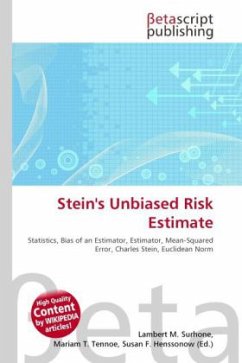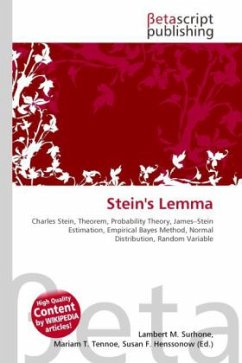Please note that the content of this book primarily consists of articles available from Wikipedia or other free sources online. Stein''s example (or phenomenon or paradox), in decision theory and estimation theory, is the phenomenon that when three or more parameters are estimated simultaneously, their combined estimator is more accurate (has lower expected mean-squared error) than any method that handles the parameters separately. This is surprising since the parameters and the measurements might be totally unrelated. The phenomenon is named after its discoverer, Charles Stein. Let be a vector consisting of n 3 unknown parameters. To estimate these parameters, a single measurement Xi is performed for each parameter i, resulting in a vector X of length n. Suppose the measurements are independent, identically distributed, Gaussian random variables, with mean and variance 1, i.e.







